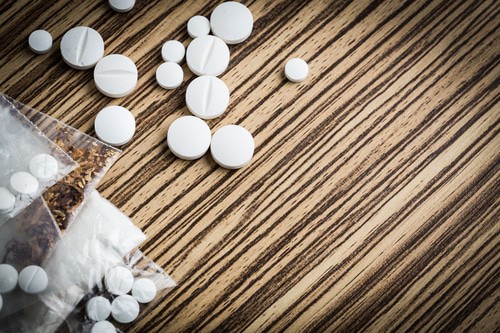Can you experience suboxone withdrawals? Quitting opiates is no small feat. Nausea, diarrhea, sweats, chills, cravings, irritability, runny nose, sleepless nights, mood swings, headaches, cramps, and restless legs are terrifying prospects for someone who decides to get clean. Medical advances have led to the development of several medications used to treat opioid addiction, but how safe are they? In this blog, we will discuss one in particular, Suboxone, and how suboxone use for opioid addiction treatment may just be swapping one addiction for another.
Opioid Addiction Medications
Medications have been proven to be effective in treating opioid addiction because they help individuals address their opioid dependence by reducing some of the difficult withdrawal symptoms that they may experience as the drug leaves their body. Below are two common medications used in treating opioid addiction.
Methadone
In the past, methadone was the go-to drug when trying to get clean from opiates. Methadone is a full opioid agonist, meaning it binds fully to opioid receptors in the brain and produces the same effects as an opiate. Methadone maintenance has been an option for those who are not ready to get fully clean. It is a harm-reduction medication maintenance form of treatment. One that involves showing up daily for a dose, which generally increases over time. The drawbacks are a high potential for abuse, having to show up for doses daily, and a VERY difficult detox.
Buprenorphine
Buprenorphine is an opioid medication used to manage pain and opioid dependence. Naloxone, a substance that prevents buprenorphine from being misused, is added to the medicine to decrease opioid dependence. The patches are given for seven days to reduce opioid addiction. Buprenorphine is an opioid agonist therapy that prevents opioid withdrawal symptoms and drug cravings without making the individual drowsy or euphoric. This lowers the dangers of opioid abuse and gives those with opioid addictions a chance to improve their lives. Buprenorphine is an opioid agonist therapy that works in the same way as methadone,
What is Suboxone?
More recently, Suboxone has come onto the scene. Approved by the FDA in 2002 as a way to prevent continued opioid overdose fatality, Suboxone is a combination of buprenorphine, an opioid, and naloxone, an opioid antagonist otherwise known as Narcan. Unlike other medication-assisted treatments, Suboxone can be taken at home under the supervision of the prescribing doctor. the medication can be taken buccally or sublingually and instructions for use must be followed.
It is a partial agonist, meaning it only reacts on the opioid receptors partially. Suboxone is a mix of buprenorphine and naloxone. Naloxone is the same medication used in Narcan, the anti-overdose drug. It was designed originally as a fast taper method for those wishing to come off opiates such as heroin, fentanyl, or oxycodone.
A fast taper means a gradually decreasing amount from 3-7 days. However, many doctors have begun prescribing patients Suboxone to take for long-term medication-assisted treatment. Sublingual strips or pills are most common. The feeling is similar to opiates but without the same euphoria. Similar to methadone, the dosage is gradually increased over time. Some addicts find themselves taking Suboxone for months or even years.
Suboxone Pros and Cons
Suboxone, like other medication-assisted treatment medications such as methadone, can be addictive. People can still abuse this drug, even though it is less likely to be abused than other medication-assisted treatment drugs. Some individuals may benefit from this therapy, whereas others may need something else. Below, we discuss the pros and cons of suboxone use for opioid addiction treatment.
Pros of Suboxone
Effective
Combining this medication with other treatment options, such as 12-step meetings, is the most effective. This drug can be obtained from an addiction clinic or a doctor’s office, making it more accessible to people seeking treatment, which allows more people to receive the help they need. With this drug, opiate addiction can be managed more effectively, resulting in a greater success rate than other treatments. Suboxone also has a low potential for abuse.
Prevents a High from Occurring
Naloxone, which is present in Suboxone, makes it less prone to abuse because of the lower side effects than methadone or other drugs. The naloxone will block the brain’s receptors, preventing any type of high making tapering opioid addiction possible with this drug. Doctors can control the quantity of suboxone you receive by using replacement drugs in recovery. Once you get clean, you should stay clean, and the administration of replacement medicines helps doctors do just that. Doctors gradually reduce the amount of substance you receive as you recover to avoid withdrawal symptoms.
Reduces Withdrawal Symptoms
Another advantage of this medicine is that it may help to reduce or eliminate withdrawal symptoms. Withdrawal occurs if the body does not receive what it is accustomed to. Opiate withdrawal is a difficult process. Withdrawal symptoms such as sweating, difficulty sleeping, nausea, abdominal pain, and anxiety might occur. Many people want something that can help with these symptoms, which is why this drug is prescribed. When withdrawal symptoms are reduced, users can begin concentrating on what caused them to start taking opioids in the first place. This allows them to concentrate on getting clean and overcoming addiction.
Cons of Suboxone
Hard to Quit
Users of this drug must remain on it for a long time to avoid the risks involved. As people maintain their sobriety, they may gradually discontinue taking this drug. Patients’ treatment plans and responses to treatment determine how long they must stay on it. Since this medicine produces desirable outcomes, it may cause addictions in some people. Withdrawal symptoms may occur if you stop taking this drug after developing a habit. Even while doctors set limits on how much drug a patient may consume at one time, patients are still tempted to consume more than the doctor prescribes, especially during stressful times.
Can be Misused
Although the naloxone present in suboxone helps prevent dependency, addicts may use buprenorphine in the drug to facilitate abuse in other ways. Some addicts even trade this drug for street drugs because drug dealers can sell buprenorphine to other addicts. In addition to creating more crime, this practice feeds into another addiction and is used to keep patients addicted. If the patient is misusing this medication, it will not benefit them and consequently will not help them in overcoming their addiction. It’s harder to give up Suboxone without professional assistance.
Tolerance Can Increase
Some addiction specialists believe that switching from one opiate to another doesn’t affect the neurological or emotional aspects of addiction. Others assert that long-term opiate use isn’t enough to ensure sobriety. According to the science, as long as opioids are present in the body, the quantity of endorphins produced decreases and the quantity of receptors in the brain increases. With time, tolerance will build and higher doses will be needed.
Suboxone Detox
So what happens when you have been on Suboxone for months or years, and become ready to be totally clean? When will you be able to discontinue use? What is Suboxone detox like?
Suboxone has a much longer half-life than opiates and stays in the body much longer. The first three days of Suboxone detox can be similar, or more intense, than withdrawals from heroin. Sweats, chills, nausea, vomiting, disorientation, diarrhea, cramps, headaches, cramps, aches, along with intense cravings may all be experienced.
Throughout the remainder of the first week, the psychological effects are most apparent. Insomnia, depression, anxiety, irritability, anxiety, and agitation are to be expected. Luckily, at this point medications such as Lucemyra and antidepressants may begin to be introduced to help ease the symptoms.
A detox facility, followed by treatment, is the most common and safe way to detox from Suboxone. You will be medically supervised, given a Suboxone taper, and provided with therapy and medications to treat your symptoms. It makes this process MUCH easier. However, it is still no easy task. The most important thing is learning the skills and techniques from trained professionals that will prevent future relapse.
Suboxone Withdrawal
Suboxone, an opiate-dependence treatment medication, may be a helpful option for those seeking freedom from their addictions, but it is often taken for years after the user has abstained from other addictive opiates. Suboxone, despite its benefits, is addictive. Withdrawal symptoms similar to those of other opiates are produced if Suboxone is discontinued suddenly.
In the weeks and months following, the psychological effects may be present but hopefully managed through therapy and medication. The cravings will still be there, and can seem overwhelming. The drug is out of your system, but Post Acute Withdrawal Symptoms (PAWS) may still remain. Symptoms of suboxone withdrawal include:
- Nausea
- Headaches
- Vomiting
- Body aches
- Insomnia
- Lethargy
- Indigestion
- Anxiety
- Irritability
- Intense drug cravings
- Depression
- Fever
- Chills
- Excessive sweating
- Difficulty concentrating
Psychological Effects of Suboxone Withdrawal
Psychological challenges during withdrawal are not always caused by withdrawal itself, but rather by the return of mental health problems that were suppressed by substance use, such as anxiety and depression. After withdrawal, people must also face the consequences of their addiction. Guilt, remorse, and other issues are not uncommon. Therefore, seeking assistance is critical in helping you get your life back on track. It may be difficult to cope with your emotions and to accept the consequences of your addiction.
Long-Term Opioid Addiction Treatment
Long-term treatment plans should focus on preventing future relapses. A lot of emphases should be put on preventing relapse after you come off Suboxone because you will still have an addiction even though you have beaten your physical dependence on opioids.
You can discover why you began using drugs through talk therapy. You can identify specific situations and feelings that led you to use them in the past. Combining medication management with talk therapy is more efficient at treating opioid addiction than medication alone, according to research. By recognizing and eliminating the negative mental patterns that lead you to make poor decisions, you can identify and avoid these triggers.
You can explore talk therapy in a number of ways. You may wish to seek out a psychologist or mental health counselor in private practice to work one-on-one. You may also meet with a mental health or addiction counselor at a local community clinic or participate in group therapy programs, which are provided at a number of hospitals, clinics, and addiction treatment facilities.
Suboxone Addiction Treatment in Asheville, NC
Suboxone is a helpful medicine, but it must be used responsibly as suboxone addiction and suboxone withdrawals can easily occur. Suboxone abuse occurs when a person takes it excessively often, in excessively large doses, or without a prescription. It’s a tragedy that a medicine that is meant to help people overcome addiction may also be addictive; once someone has cured their addiction to Suboxone, they can finally free themselves from opioids for good.
If you or a loved one is abusing Suboxone and needs help with kicking an opioid habit, contact the professionals at Asheville Recovery Center today to find out about treatment alternatives. A Suboxone dependence treatment program at our rehab center includes detox referrals, therapy, various intensive treatment programs, and long-term support in an aftercare program.
You no longer have to struggle with suboxone dependence or addiction on your own. We at Asheville Recovery Center are here to help you and look forward to doing so.










